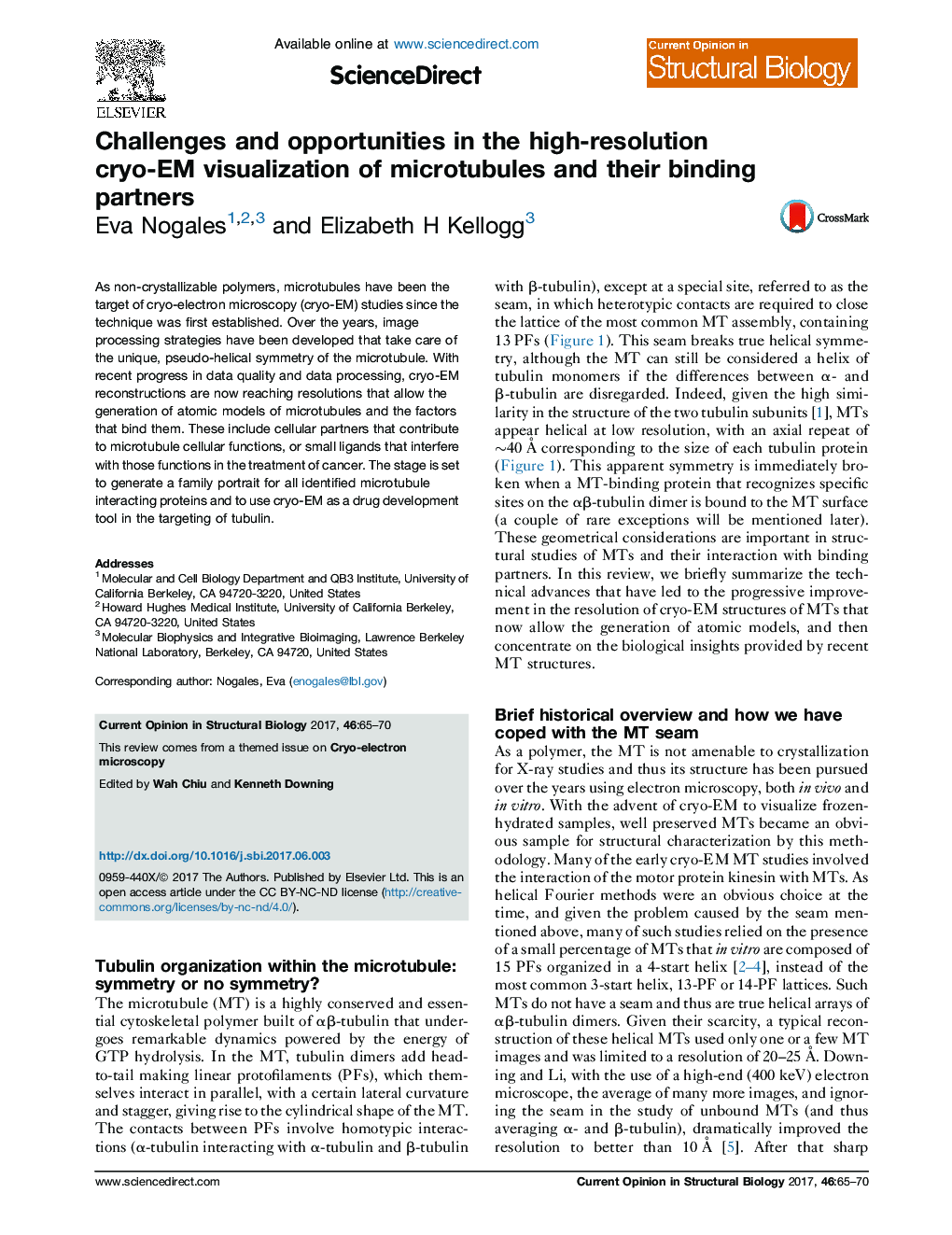| Article ID | Journal | Published Year | Pages | File Type |
|---|---|---|---|---|
| 5510801 | Current Opinion in Structural Biology | 2017 | 6 Pages |
â¢Technical progress leads to high-resolution cryo-EM structures of microtubules (MTs).â¢Atomic details of MT-binding proteins and antimitotic drugs bound to MTs.â¢Characterization of the MT seam: a possible target of MT stability regulation.â¢Plasticity of structural modules in the binding of MTs with their cellular partners.â¢Cryo-EM of MTs shows high potential for drug development and improvement.
As non-crystallizable polymers, microtubules have been the target of cryo-electron microscopy (cryo-EM) studies since the technique was first established. Over the years, image processing strategies have been developed that take care of the unique, pseudo-helical symmetry of the microtubule. With recent progress in data quality and data processing, cryo-EM reconstructions are now reaching resolutions that allow the generation of atomic models of microtubules and the factors that bind them. These include cellular partners that contribute to microtubule cellular functions, or small ligands that interfere with those functions in the treatment of cancer. The stage is set to generate a family portrait for all identified microtubule interacting proteins and to use cryo-EM as a drug development tool in the targeting of tubulin.
